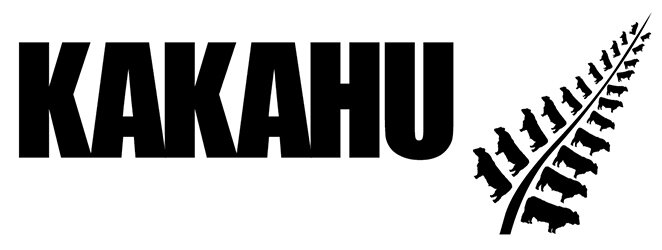Our Angus Genetics
If we look at the basics, nothing helps the bank balance like having calves on the ground, year after year. So for this reason, the maternal traits are the most important aspect of our Angus cow herd.
However carcass is also a monumental focus for us, and it has been for over 25 years. As a beef producer, we must generate a product that will not only compete but be superior to all other protein options in the market. In the modern day we are now seeing technology that can create lab grown protein that looks, feels and even tastes like real beef. At Kakahu we are continually refining our genetics to ensure our grass fed Angus beef will stay on top of this technology and be recognised as a healthy, sustainable product for future generations.

The scientific approach to breeding quality Angus beef…
Angus 2 Year Bull Sale - June 17 at 1pm
Angus Yearling Bull Sale - October
Auctions held on farm at Kakahu and online with BIDR
Using TACE percentiles in animal selection
Angus bulls sold within New Zealand are registered in two different databases — Angus Australia (AngusPRO animals) and Angus New Zealand. The TACE percentiles in sale catalogues are only relevant to the population they are compared against, meaning you can compare one AngusPRO animal against another, but these percentiles can’t be compared across different breed societies i.e. animals registered with Angus NZ.
It is however important to note that the TACE EBVs themselves are comparable. For most EBV traits, the direct EBV is comparable to establish expected progeny performance differences, however, where the animal sits in reference to the rest of that population (its ranking) can be substantially different across the Angus Australia and Angus New Zealand societies.
Let’s look at the breed average for IMF. Angus Australia’s 50th percentile is +2.2 whereas Angus NZ’s 50th percentile is +0.8 (April 2023 TACE analysis). If you’re selecting bulls based on percentiles, please ensure you are aware of the population they’re compared with, or check the actual EBV figures carefully.
Reference Sires
Kakahu have used a number of sires that have had a strong influence in the direction the herd has taken over the years…
TACE Explained
TACE (TransTasman Angus Cattle Evaluation) is the genetic evaluation program adopted by Angus Australia for Angus beef cattle. An animal’s breeding value can be defined as its genetic merit for each trait. While it is not possible to determine an animal’s true breeding value, it is possible to estimate it. These estimates of an animal’s true breeding value are called EBVs (Estimated Breeding Values).
EBVs explained…
The science producing cattle that are both more efficient, and more profitable.
An animal’s breeding value is its genetic merit, half of which will be passed on to its progeny. While we will never know the exact breeding value, for performance traits it is possible to make good estimates. These estimates are called Estimated Breeding Values (EBVs).
In the calculation of EBVs, the performance of individual animals within a contemporary group is directly compared to the average of other animals in that group. A contemporary group consists of animals of the same sex and age class within a herd, run under the same management conditions and treated equally. Indirect comparisons are made between animals reared in different contemporary groups, through the use of pedigree links between the groups.
EBVs are expressed in the units of measurement for each particular trait. They are shown as + ive or – ive differences between an individual animal’s genetics difference and the genetic base to which the animal is compared. For example, a bull with an EBV of +50 kg for 600-Day Weight is estimated to have genetic merit 50 kg above the breed base of 0 kg. Since the breed base is set to an historical benchmark, the average EBVs of animals in each year drop has changed over time as a result of genetic progress within the breed.
The absolute value of any EBV is not critical, but rather the differences in EBVs between animals. Particular animals should be viewed as being “above or below breed average” for a particular trait.
Whilst EBVs provide the best basis for the comparison of the genetic merit of animals reared in different environments and management conditions, they can only be used to compare animals analysed within the same analysis. Consequently BREEDPLAN’s TACE analysis EBVs cannot be validly compared with EBVs for any other breed.
Although EBVs provide an estimate of an animal’s genetic merit for a range of production traits, they do not provide information for all of the traits that must be considered during selection of functional animals. In all situations, EBVs should be used in conjunction with visual assessment for other traits of importance (such as structural soundness, temperament, fertility etc). A recommended practice is to firstly select breeding stock based on EBVs and to then select from this group to ensure that the final selections are otherwise acceptable.
EBVs are published for a range of traits covering fertility, calving ease, milking ability, growth, carcass merit and feed efficiency. When using EBVs to assist in selection decisions it is important to achieve a balance between the different groups of traits and to place emphasis on those traits that are important to the particular herd, markets and environment. One of the advantages of having a comprehensive range of EBVs is that it is possible to avoid extremes in particular traits and select for animals with balanced overall performance.



